- Home
- Terry C. Johnston
Trumpet on the Land: The Aftermath of Custer's Massacre, 1876 tp-10
Trumpet on the Land: The Aftermath of Custer's Massacre, 1876 tp-10 Read online
Trumpet on the Land: The Aftermath of Custer's Massacre, 1876
( The Plainsmen - 10 )
Terry C. Johnston
The "Plainsman" series continues with this powerful story of the U.S. Cavalry following the shocking massacre at Little Big Horn. After Custer's defeat, the Army vowed revenge and declared total war on the Cheyenne and Sioux. As witnessed by scout Seamus Donegan, the long, arduous trek from the Black Hills to the Slim Buttes tested the strength and will of every man involved.
Assistant Army Surgeon Dr. Valentine McGillycuddy, nearing end of horse-meat march to the Black Hills. (Courtesy Little Bighorn Battlefield Nanonal Monument)
Posed photo of soldier shooting played-out cavalry horse in march south from Slim Buttes. (Courtesy Little Bighorn Battlefield National Monument.)
Miniconjou chief “American Horse” and wife. (Courtesy South Dakota Historical Society.)
Buckskin lodge captured at Slim Buttes (note Keogh’s I Company guidon recaptured). (Courtesy Little Bighorn Battlefield National Monument.)
LAST STAND
Pushing the Sharps lever down, Donegan ejected the empty cartridge, then replanted a live round in the breech. “Seems those warriors dogging our tails was just a little too anxious to close the trap, don’t it?”
“Lucky us,” grumbled Finerty as he crabbed up to join the three, whining lead following the white men into the timber.
Grouard rolled on his back and found Sibley, then instructed, “Lieutenant, tell your boys not to fire a shot until they got a good target.”
“These men have fought before,” Sibley snapped.
“Just remind ’em!” Donegan added. “We’re going to need every last bullet we have before this day’s done.”
Nodding, a grim Sibley responded, “All right.”
“And … Lieutenant,” Seamus said, causing the officer to halt in a crouch, “tell your men it’s a good idea to keep one last round in their pistols for themselves.”
BOOKS BY TERRY C. JOHNSTON
Cry of the Hawk
Winter Rain
Dream Catcher
Carry the Wind
Borderlords
One-Eyed Dream
Dance on the Wind
Buffalo Palace
Crack in the Sky
Ride the Moon Down
Death Rattle
SON OF THE PLAINS NOVELS
Long Winter Gone
Seize the Sky
Whisper of the Wolf
THE PLAINSMEN NOVELS
Sioux Dawn
Red Cloud’s Revenge
The Stalkers
Black Sun
Devil’s Backbone
Shadow Riders
Dying Thunder
Blood Song
Reap the Whirlwind
Trumpet on the Land
A Cold Day in Hell
Wolf Mountain Moon
Ashes of Heaven
Cries from the Earth
Lay the Mountains Low
for all the miles and memories
we have shared together,
this hook is affectionately
dedicated to my
Canadian saddle partner,
BRIAN TAYLOR
Cast
of
Characters
Seamus Donegan Samantha Donegan
Army Scouts
Frank Grouard (“The Grabber,” Yugata)
Louis (Louie) Richaud (Reshaw)
Baptiste Pourier (“Big Bat,” Left Hand)
William F. Cody
*Charles / James / Jonathan White (“Buffalo Chips Charlie”)
Tait / Tate
Baptiste Garnier (“Little Bat”)
John Wallace “Captain Jack” Crawford (“The Poet Scout”)
“Buckskin Jack” Russell
“Texas Jack” Omohundro
Military
Lieutenant General Philip H. Sheridan—Commander, Division of the Missouri (Chicago)
Brigadier General George C. Crook—commanding Department of the Platte (HQ—Omaha, Nebraska)
General Alfred H. Terry—commanding Department of the Dakota
Colonel Wesley Merritt—Commanding Officer, Fifth Cavalry (Brevet MAJOR GENERAL)
Colonel Nelson A. Miles—Commanding Officer, Fifth In-fantry
Lieutenant Colonel William B. Royall—Commanding Officer, Third Cavalry (Brevet COLONEL)
Lieutenant Colonel Eugene A. Carr—Fifth Cavalry (Brevet MAJOR GENERAL)
Lieutenant Colonel James W. “Sandy” Forsyth—headquarters staff, Division of the Missouri
Lieutenant Colonel Joseph Nelson Garland Whistler—Fifth Infantry
Major Edwin F. Townsend—Post Commander, Fort Laramie (Brevet COLONEL)
Major Alexander Chambers—Commanding Officer, Fourth Infantry (Brevet COLONEL)
Major Andrew W. Evans—Second in Command, Third Cavalry (Brevet COLONEL) Battalion Commander
Major John J. Upham—Fifth Cavalry, Battalion Commander
Captain Julius W. Mason—K Troop, Fifth Cavalry (Brevet LIEUTENANT COLONEL) Battalion Commander
Captain William H. Jordan—Ninth Infantry, Commanding Officer, Camp Robinson (Brevet MAJOR)
Captain James “Teddy” Egan—K. Troop, Second Cavalry
Captain Emil Adams—C Troop, Fifth Cavalry
Captain Thomas B. Weir—Seventh Cavalry
Captain Edward W. Smith—adjutant to General Alfred Terry
Captain Thaddeus H. Stanton—Paymaster, Department of the Platte, Commander of Volunteers (Brevet MAJOR)
Captain Samuel Munson—C Company, Ninth Infantry
Captain Andrew S. Burt—H Company, Ninth Infantry (Brevet MAJOR)
Captain Gerhard L. Luhn—F Company, Fourth Infantry
Captain Daniel W. Burke—C Company, Fourteenth Infantry
Captain William H. Andrews—I Troop, Third Cavalry
Captain John V. Furey—Expedition Quartermaster, commanding wagon/supply train
Captain Henry E. Noyes—I Troop, Second Cavalry (Brevet MAJOR) Battalion Commander
Captain George M. (“Black Jack”) Randall—Chief of Scouts, Twenty-third Infantry (Brevet MAJOR)
Captain William H. Powell—G Company, Fourth Infantry Captain Anson Mills—M Troop, Third Cavalry (Brevet COLONEL)
Captain Frederick Van Vliet—C Troop, Third Cavalry (Brevet MAJOR)
Captain Alexander Sutorius—E. Troop, Third Cavalry
Captain Peter D. Vroom—L Troop, Third Cavalry
Captain Elijah R. Wells—E. Troop, Second Cavalry
Captain Samuel S. Sumner—D Troop, Fifth Cavalry (Brevet MAJOR)
Captain Robert H. Montgomery—B. Troop, Fifth Cavalry
Captain Sanford C. Kellogg—I Troop, Fifth Cavalry (Brevet LIEUTENANT COLONEL)
Captain George F. Price—E. Troop, Fifth Cavalry Captain Edward M. Hayes—G Troop, Fifth Cavalry
Captain J. Scott Payne—F Troop, Fifth Cavalry
Captain H. J. Nowlan—Seventh Cavalry, acting assistant quartermaster to the Dakota Column
Lieutenant John G. Bourke—aide-de-camp to General Crook
Lieutenant Henry R. Lemly—Regimental Adjutant to Colonel Royall
First Lieutenant William L. Carpenter—G Company, Ninth Infantry
First Lieutenant Adolphus H. Von Luettwitz—E. Troop, Third Cavalry
First Lieutenant Augustus C. Paul—M Troop, Third Cavalry
First Lieutenant Edward S. Godfrey—Seventh Cavalry
First Lieutenant Emmet Crawford—G Troop, Third Cavalry
First Lieutenant
Henry Seton—D Company, Fourth Infantry
First Lieutenant Joseph Lawson—A Troop, Third Cavalry
First Lieutenant William C. Forbush—Fifth Cavalry, Assistant Adjutant General
First Lieutenant Charles King—Fifth Cavalry, Adjutant
First Lieutenant William P. Hall—Fifth Cavalry, Quartermaster
First Lieutenant Walter S. Schuyler—Fifth Cavalry, aide-decamp to Crook
First Lieutenant William Philo Clark—I Troop, Second Cavalry, aide-de-camp to General Crook
Second Lieutenant Robert London—A Troop, Fifth Cavalry (after Wilson resigns)
Second Lieutenant Charles M. Rockefeller—H Company, Ninth Infantry
Second Lieutenant Edgar B. Robertson—H Company, Ninth Infantry
Second Lieutenant Henry D. Huntington—D Troop, Second Cavalry
Second Lieutenant Edward L. Keyes—C Troop, Fifth Cavalry
Second Lieutenant J. Hayden Pardee—Twenty-third Infantry, aide-de-camp to Merritt
Lieutenant William C. Hunter—U.S. Navy (Brevet COMMODORE)
Dr. Bennett A. Clements—Surgeon, Expedition Medical Director (oversaw eight medical personnel, assistant surgeons and stewards)
Dr. Albert Hartsuff—Assistant Surgeon
Dr. Julius H. Patzki—Assistant Surgeon
Dr. Charles R. Stephens—Assistant Surgeon
Dr. J. W. Powell—Assistant Surgeon, Fifth Cavalry
Dr. Valentine McGillycuddy—Assistant Surgeon
First Lieutenant Alfred B. Bache—F Troop, Fifth Cavalry
Second Lieutenant Frederick Schwatka—M Troop, Third Cavalry
Second Lieutenant George F. Chase—L Troop, Third Cavalry
First Lieutenant John W. Bubb—Commissary of Subsistence
First Lieutenant Emmet Crawford—G Troop, Third Cavalry
First Lieutenant William B. Rawolle—E. Troop, Second Cavalry
Lieutenant Frederick W. Sibley—E. Troop, Second Cavalry
Sergeant Oscar Cornwall—Second Cavalry, Sibley Patrol
Sergeant Charles W. Day—Second Cavalry, Sibley Patrol
Sergeant G. P. Harrington—Second Cavalry, Sibley Patrol
†Sergeant Edmund Schreiber—K. Troop, Fifth Cavalry
†Sergeant John A. Kirkwood—M Troop, Third Cavalry
†Sergeant Edward Glass—E. Troop, Third Cavalry
Corporal Thomas C. Warren—Second Cavalry, Sibley Patrol
Corporal Thomas W. Wilkinson—K. Troop, Fifth Cavalry
Corporal J. S. Clanton—B. Troop, Fifth Cavalry
Private Valentine Rufus—Second Cavalry, Sibley Patrol
Private Patrick Hasson—Second Cavalry, Sibley Patrol
Private George Rhode—Second Cavalry, Sibley Patrol
Private George Watts—Second Cavalry, Sibley Patrol
Private Henry Collins—Second Cavalry, Sibley Patrol
Private William Evans—E. Company, Seventh Infantry
Private Benjamin F. Stewart—E. Company, Seventh Infantry
Private James Bell—E Company, Seventh Infantry
Private Christian Madsen—A Troop, Fifth Cavalry
*Private John Wenzel—A Troop, Third Cavalry
Private Albert Glavinski—M Troop, Third Cavalry
†Private Orlando H. Duren—E. Troop, Third Cavalry
*Private Edward Kennedy—C Troop, Fifth Cavalry
†Private John M. Stevenson—I Troop, Second Cavalry
†Private August Dorn—D Troop, Fifth Cavalry
Private Cyrus B. Milner—A Troop, Fifth Cavalry
†Private Edward Kiernan—E Troop, Third Cavalry
†Private William B. DuBois—C Troop, Third Cavalry
†Private August Foran—D Troop, Third Cavalry
†Private Charles Foster—B Troop, Third Cavalry
Shoshone Allies
Washakie
Sioux
American Horse Little Eagle
Dog Necklace Antelope Tail
Charging Bear Red Horse
Iron Thunder
Cheyenne
Yellow Hair Rain Maker
Civilian Characters
John “Trailer Jack” Becker—packer on Sibley Scout
Wilbur Storey—owner/publisher, Chicago Times
Clint Snowden—city editor, Chicago Times
Thomas Moore—Chief of Pack Train
Richard “Uncle Dick” Closter
Grant Marsh—captain, Far West steamboat
Dave Campbell—pilot, Far West steamboat
†James B. Glover—packer
E. B. Farnum—Mayor of Deadwood
Martha Luhn—officer’s wife at Fort Laramie
Elizabeth Burt—officer’s wife at Fort Laramie
Robert Strahorn—correspondent, Denver Rocky Mountain News, Chicago Tribune, Cheyenne Sun, and the Omaha Republican
John F. Finerty—correspondent, Chicago Times
Joe Wasson—correspondent, New York Tribune, Philadelphia Press, and San Francisco Alta California
Reuben B. Davenport—correspondent, New York Herald
T. B. MacMillan—correspondent, Chicago Inter-Ocean
J. J. Talbot—correspondent, New York Graphic
Barbour Lathrop—correspondent, San Francisco Evening Bulletin
Cuthbert Mills—New York Times
Tom Cosgrove—civilian leader of the Shoshone battalion
Nelson Yarnell—Cosgrove’s lieutenant
Yancy Eckles—Cosgrove’s sergeant
*killed in the battle of Slim Buttes
†wounded at the Battle of Slim Buttes
At Laramie I told the commissioners that I had seen the Sioux commit a massacre; they killed many white men. But the Sioux are still here, and still kill white men. When you whites whip the Sioux come and tell us of it. You are afraid of the Sioux. Two years ago I went with the soldiers; they talked very brave. They said they were going through the Sioux country to Powder River and Tongue River. We got to Pryor Creek, just below here in the Crow country. I wanted to go ahead, but the soldiers got scared and turned back. The soldiers were the whirlwind, but the whirlwind turned back. Last summer the soldiers went to Pryor Creek again; again the whirlwind was going through Sioux country, but again the whirlwind turned back. We Crows are not the whirlwind, but we go to the Sioux; we go to their country; we meet them and fight; we do not turn back. But then we are not the whirlwind! … The Sioux are on the way, and you are afraid of them; they will turn the whirlwind back.
—Blackfoot
Crow war chief
The people must be left with nothing but their eyes to weep with.
—Lieutenant General Philip H. Sheridan
The “Sibley Scout” is famous among Indian fighters as being one of the narrowest escapes from savages now on record.
—Editorial
The New York Tribune
Toward the end of the perilous march [of the Sibley patrol], we all became so weakened that we marched for ten minutes and then would lie down and rest. Several of the most robust men became insane, and one or two never regained their wits.
—Lieutenant Frederick W. Sibley
[The skirmish at Warbonnet Creek] is one of few cases where a large party of Indians was successfully ambushed by troops.
—Don Russell
Campaigning with King
For the Indians who had gloried in the victory of Little Big Horn, Slim Buttes heralded the retaliatory blows that ultimately broke their resistance and forced their submission … the actions of September 9 and 10, 1876, commenced the relentless punitive warfare that was to be waged over the next eight months, until the tribesmen either had died or had gone peaceably to the agencies.
—Jerome A. Green
Slim Buttes, 1876
… many a suffering stomach gladdened with a welcome change from horse meat, tough and stringy, to rib roasts of pony, grass-fed, sweet, and succulent. There is no such sauce as starvation.
—Lieutenant Charles King
&
nbsp; Campaigning with Crook
The terrible persistence with which [Crook] urged his faint, starving, foot-sore, tattered soldiers along the trail, to which he clung with a resolution and determination that nothing could shake, entitles him to the respect and admiration of his countrymen—a respect and admiration, by the way, which was fully accorded him by his gallant and equally desperate foes.
—Cyrus Townsend Brady
Indian Fights and Fighters
Only the brave and fearless can be just.
—Old Lakota proverb
For acting to stop the Cheyennes, [Merritt] was commended by General Sheridan; for delaying the march of the Big Horn and Yellowstone Expedition for a week, he was blamed by General Crook.
—Don Russell
The Lives and Legends of Buffalo Bill
The battle [of Slim Buttes] was one of the most picturesque ever fought in the West. Crook and his officers stood in the camp, the center of a vast amphitheater ringed with fire, up the sides of which the soldiers steadily climbed to get at the Indians, silhouetted in all their war finery against the sky.
—Cyrus Townsend Brady
Indian Fights and Fighters
Slim Buttes was touted as a victory for the army, but it was a shabby victory at best and accomplished nothing beyond angering the Indians. The dawn attack had felled women and children, and when the tribesmen crept back into the village after the military withdrawal, they confronted heartrending scenes. Many of the groups in the vicinity of Slim Buttes, including the one struck by Mills, had intended to surrender at an agency. The sight of women and children maimed or slain by army bullets dampened that impulse.
—Robert M. Utley
The Lance and the Shield
Sitting Bull had warned his people not to take any spoils from the Little Big Horn battle[field], or the soldiers would crush them. The Slim Buttes battle was part of the prophecy which came true.
—Fred H. Werner
The Slim Buttes Battle
Foreword
At the beginning of some chapters and some scenes, you will read the same news stories devoured by the officers’ wives and the civilians employed at the posts or those in adjacent frontier settlements—just what Samantha Donegan herself would have read—taken from the front page of the daily newspapers that arrived as much as a week late (and sometimes more), that delay due to the wilderness distances to be traveled by freight carriers.

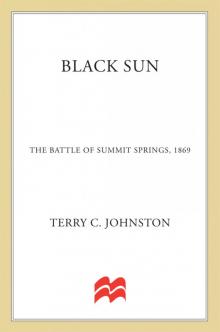 Black Sun, The Battle of Summit Springs, 1869
Black Sun, The Battle of Summit Springs, 1869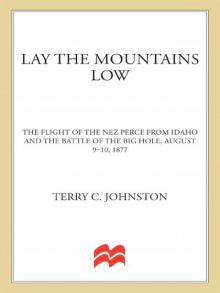 Lay the Mountains Low
Lay the Mountains Low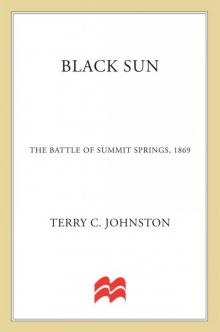 Black Sun: The Battle of Summit Springs, 1869 (The Plainsmen Series)
Black Sun: The Battle of Summit Springs, 1869 (The Plainsmen Series)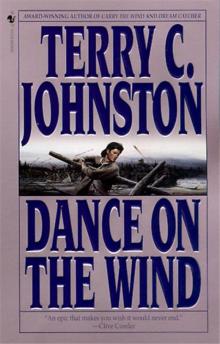 Dance on the Wind tb-1
Dance on the Wind tb-1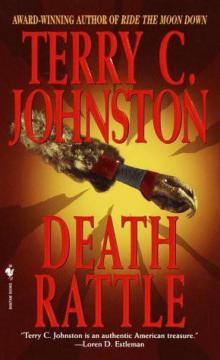 Death Rattle tb-8
Death Rattle tb-8 The Stalkers
The Stalkers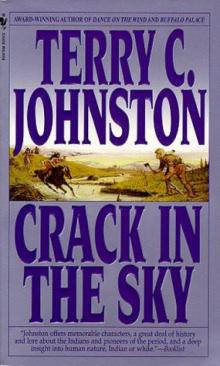 Crack in the Sky tb-3
Crack in the Sky tb-3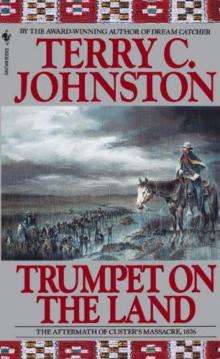 Trumpet on the Land: The Aftermath of Custer's Massacre, 1876 tp-10
Trumpet on the Land: The Aftermath of Custer's Massacre, 1876 tp-10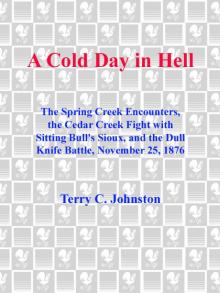 A Cold Day in Hell
A Cold Day in Hell Long Winter Gone: Son of the Plains - Volume 1
Long Winter Gone: Son of the Plains - Volume 1 Buffalo Palace
Buffalo Palace Cries from the Earth
Cries from the Earth Death Rattle
Death Rattle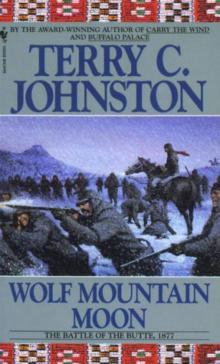 Wolf Mountain Moon: The Battle of the Butte, 1877 tp-12
Wolf Mountain Moon: The Battle of the Butte, 1877 tp-12 Crack in the Sky
Crack in the Sky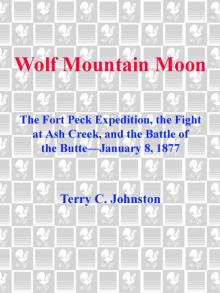 Wolf Mountain Moon
Wolf Mountain Moon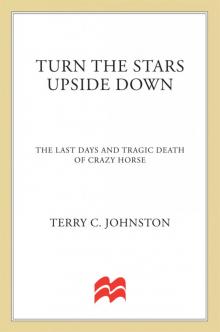 Turn the Stars Upside Down: The Last Days and Tragic Death of Crazy Horse
Turn the Stars Upside Down: The Last Days and Tragic Death of Crazy Horse Winter Rain
Winter Rain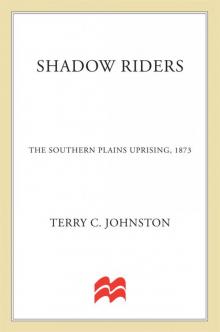 Shadow Riders: The Southern Plains Uprising, 1873 (The Plainsmen Series)
Shadow Riders: The Southern Plains Uprising, 1873 (The Plainsmen Series)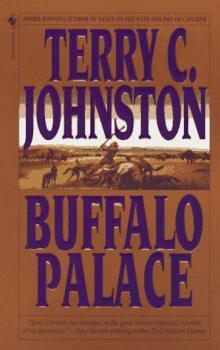 Buffalo Palace tb-2
Buffalo Palace tb-2 Cries from the Earth: The Outbreak Of the Nez Perce War and the Battle of White Bird Canyon June 17, 1877 (The Plainsmen Series)
Cries from the Earth: The Outbreak Of the Nez Perce War and the Battle of White Bird Canyon June 17, 1877 (The Plainsmen Series)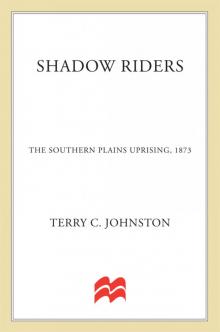 Shadow Riders, The Southern Plains Uprising, 1873
Shadow Riders, The Southern Plains Uprising, 1873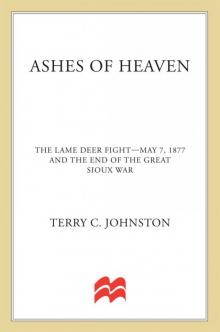 Ashes of Heaven (The Plainsmen Series)
Ashes of Heaven (The Plainsmen Series)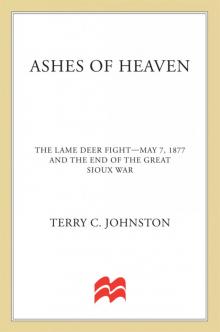 Ashes of Heaven
Ashes of Heaven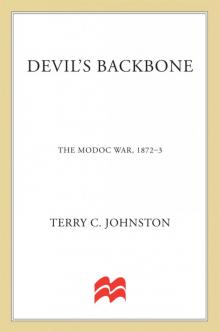 Devil's Backbone: The Modoc War, 1872-3
Devil's Backbone: The Modoc War, 1872-3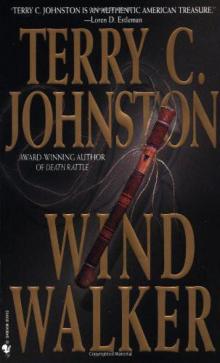 Wind Walker tb-9
Wind Walker tb-9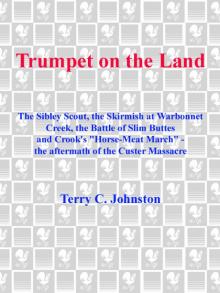 Trumpet on the Land
Trumpet on the Land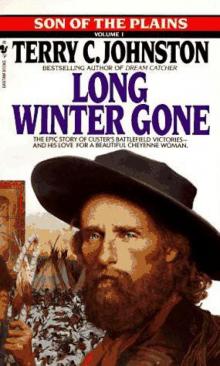 Long Winter Gone sotp-1
Long Winter Gone sotp-1 Dying Thunder
Dying Thunder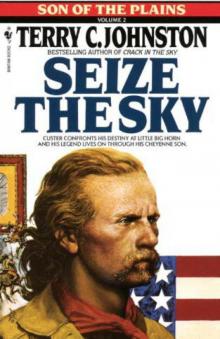 Seize the Sky sotp-2
Seize the Sky sotp-2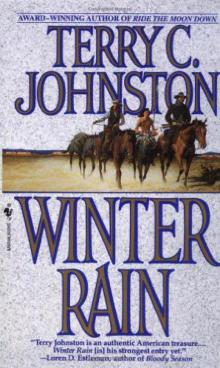 Winter Rain jh-2
Winter Rain jh-2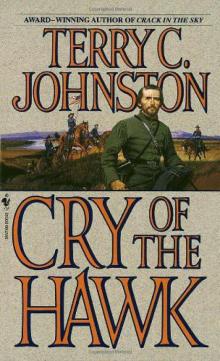 Cry of the Hawk jh-1
Cry of the Hawk jh-1 Sioux Dawn, The Fetterman Massacre, 1866
Sioux Dawn, The Fetterman Massacre, 1866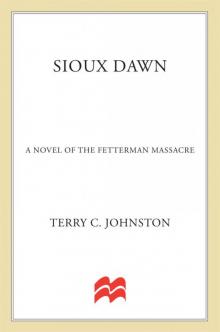 Sioux Dawn: The Fetterman Massacre, 1866 (The Plainsmen Series)
Sioux Dawn: The Fetterman Massacre, 1866 (The Plainsmen Series) Ride the Moon Down
Ride the Moon Down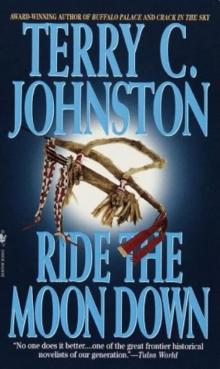 Ride the Moon Down tb-7
Ride the Moon Down tb-7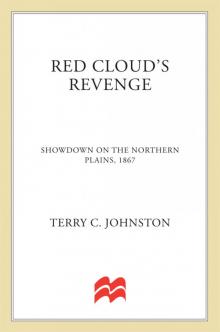 Red Cloud's Revenge
Red Cloud's Revenge Wind Walker
Wind Walker